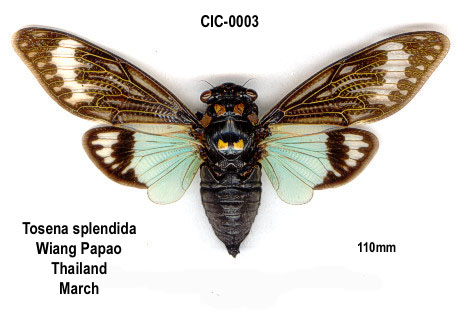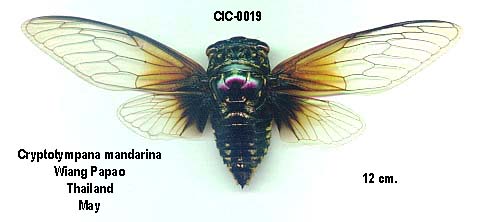Tosena albata is a cicada found in Burma, India, Nepal, Thailand, and Vietnam. In the past, this cicada was known as Tosena melanoptera.
Photo by Michel Chantraine:

Description:
Tegmina with five longitudinal greyish fasciae, one occupying radial area, and the others divided by ulnar veins, two of which amalgamate with the transverse fascia, and five irregular greyish fasciae situate in the apical areas. Wings with nine greyish ray-like fasciae situate on outer margin, the one at anal area largest; two-thirds of the outer margin narrowly edged with greyish. Apices of the femora not ochraceous.
Long. excl. tegm. Male 58 to 62 millim.; Female 48 millim. Exp. tegm. Male, 140 to 155 millim. Female, 130 millim.
Scientific classification:
Family: Cicadidae
Subfamily: Cicadinae
Tribe: Tosenini
Genus: Tosena
Species: Tosena albata Distant, 1878
For more information about this cicada, visit Cicadas of India.
References:
- The description and location information comes from A Monograph of Oriental Cicadas by W. L. Distant. 1889-1892. Read it on the Biodiversity Heritage Library website.
- Species name information comes from Allen Sanborn’s Catalogue of the Cicadoidea (Hemiptera: Auchenorrhyncha).











